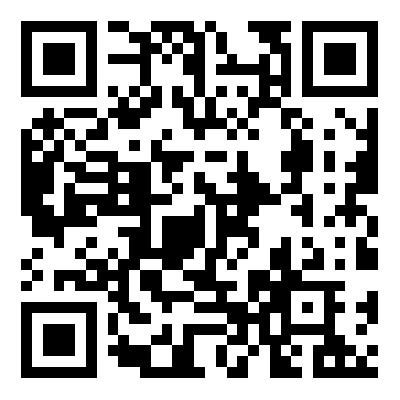Design and manufacturing of automotive inspection tools - lifespan of inspection tools
The concept of gauge lifespan
The lifespan of a gauge refers to the life cycle of the gauge from its initial use to the failure of accuracy, and the inability to determine the qualification of the workpiece. Ideally, it ends with the end of the development cycle of the workpiece. During use, the parts of the inspection tool may fail due to wear or damage. If the wear or damage is severe, making it impossible to repair and use the inspection tool, it should be scrapped. If the parts of the fixture have interchangeability and can be replaced in a timely manner after failure, then the lifespan of the fixture is theoretically infinite. However, after long-term use, the components of the inspection tool gradually tend to age, the probability of failure will greatly increase, repair costs will also increase, and the false alarm rate of non-conforming parts will increase, affecting the monitoring of mass production of parts. At the same time, frequent repair of inspection tools will directly affect the production efficiency of parts. Therefore, when repairing inspection tools is economically unreasonable, it should also be considered to scrap them. Without considering external forces, the design lifespan of gauges is generally determined by factors such as their own structure, materials, and heat treatment. Therefore, in the early stages of gauge design, the original intention should be to consider the lifespan of gauges, reduce design defects, and extend their service life without increasing costs.
The failure forms of inspection tools
The basic forms of failure of inspection tools are four: wear failure, fracture failure, fatigue failure, and plastic deformation failure
1) Wear and tear
As a type of inspection equipment, the functional components on the inspection tool need to move and adjust their corresponding posture or cooperate with other auxiliary tools in order to reach the inspection area of the product and make effective quality judgments without displacement of the parts. Especially with Cubing gauges, open gauges, functional main models, and many detachable modules, each assembly, disassembly, and handling will have a slight impact on the stability of the gauges. When using inspection tools, the movement between moving parts and the contact between handheld parts and products can cause wear and tear on the parts. The longer the inspection tool is used, the greater the amount of wear and tear, and the more severe the wear. The forms of wear include fatigue wear, corrosion wear, and adhesive wear. The main criterion for determining whether a gauge is worn out and fails is coordinate measurement. When the measurement report shows that the gauge size exceeds the allowable tolerance range, the gauge is declared invalid. The parts with the highest frequency of wear and tear on the inspection tool that have the greatest impact on accuracy are the positioning pin, detection pin, marking pin, flipping and translation device, detachable module, sliding guide rail, dovetail groove mechanism, meter making mechanism, etc. These parts need to be checked regularly and are key areas for daily maintenance and upkeep.
2) Fatigue
Gauges are generally operated in an intermittent manner, with frequent repeated loading and unloading putting the stressed parts of the gauge under alternating stress. Some of the moving parts of the inspection tools, such as guide rails, sliders, flipping mechanisms, etc., as well as some highly automated inspection tools equipped with cylinders, electric motors, etc., will carry a certain load during the movement process, and the transfer of this impact force will be transmitted through other parts. After using the inspection tool for a period of time, due to the effect of alternating stress, many small cracks will appear on the surface and internal parts where there are microscopic defects and stress concentration. When the inspection tool continues to be used, these microcracks will gradually expand. When the microcracks expand to a certain extent, the load-bearing capacity of the inspection tool parts will be severely weakened, ultimately leading to inspection tool cracking or damage.
3) Plastic deformation
When the load borne by the inspection tool parts causes the internal stress of the parts to exceed the yield strength of their own materials, the parts will undergo plastic deformation. Common plastic deformation failures include surface wrinkles, local collapse, and edge collapse of the working parts. The harm of plastic deformation caused by inspection tools is very serious. Mild plastic deformation is not easy to detect. If transported, moved, or subjected to external forces, the plastic deformation of the inspection tool will be amplified. In severe cases, the entire positioning system will be in an unbalanced state, ultimately leading to the failure of the inspection tool. Plastic deformation generally occurs on supporting parts, such as bottom plates, brackets, support plates, and other load-bearing foundation components. If the load-bearing parts are designed weakly and the stability of the inspection tool is poor, it directly affects the repeatability in linear evaluation.
4) Fracture
The failure form of the inspection tool, which suddenly experiences large cracks or even splits into several parts due to certain reasons during normal operation, causing the entire or partial area of the inspection tool to immediately lose its working ability, is fracture failure. Common fracture failures include cracking, rupture, blade breakage, and so on. In many cases, the broken part of the inspection tool has been impacted by external forces, and the part cannot convert energy in a short period of time, resulting in fracture. There are generally two directions of force on parts, one is radial force and the other is lateral force. Lateral force is currently the main cause of fracture in inspection tool parts, so when using inspection tools, efforts should be made to avoid applying force in areas with stress concentration.
Ways to ensure and improve the effective service life of inspection tools
1) Reduce the wear of inspection tools
The fundamental reason for the wear of inspection tools is the mutual friction between parts. Reducing this friction or improving the wear resistance of inspection tool parts is an effective way to reduce the wear rate of inspection tools and improve their effective lifespan
1. Reasonably select inspection tool materials
The wear resistance of materials is one of the main factors determining the wear rate of inspection tool parts, and the wear resistance of materials mainly depends on the type of material and the heat treatment state. In general, the hardness of commonly used inspection tool materials that require wear resistance should be improved through quenching or other heat treatment methods. The harder the material, the better its wear resistance.
2. Improve the surface quality of inspection tool parts
Firstly, it is necessary to improve the precision machining quality of the part surface. The finer the part processing, the smaller the surface roughness value, and the slower the wear rate, resulting in a longer service life. Secondly, efforts should be made to avoid softening of the surface material of the parts during the processing, in order to prevent a decrease in material wear resistance. For example, when grinding, if different process conditions are selected, grinding burns will occur, resulting in a decrease in the hardness of the surface material and greatly reducing the wear resistance of the parts. Moreover, during the processing of parts, it is important to avoid knife cuts and scratches as much as possible. These subtle cracks will slowly expand and either corrode or fatigue crack when used frequently or in harsh environments.
3. Lubrication treatment
In production workshops, assembly workshops, especially welding workshops, there are usually dust or small particles that adhere to the surface of moving parts of the inspection tool. If the inspection tool is forcibly used, the particles will rub against the parts, causing surface damage to the parts. And lubricating media can play a role in cooling, cleaning, and preventing pollution on the friction pair. The detection pins, positioning pins, and other parts with relative motion of the inspection tool should be regularly lubricated with lubricating oil and rust proof oil to reduce friction coefficient and friction resistance between parts.
2) The structure of the inspection tool is firm and reliable
When designing inspection tools, it is necessary to fully consider the load situation in the stress area, and ensure that the weak parts have sufficient strength and stiffness, especially for load-bearing parts, which generally require reinforcement with ribs. The structure of the inspection tool is firm and reliable, which can withstand the impact of external loads to ensure its stability and reduce the risk of plastic deformation. We also need to avoid structural bloating caused by excessive intensity, as well as inconsistent layout and proportion of inspection tools.
3) Reasonable and standardized operation, in accordance with the articles of association
The accuracy of the inspection tool determines the quality of the product during mass production. It can be described as "a drop in the bucket leads to a thousand miles". During operation, it is necessary to follow the inspection tool specifications as a guide, and operate in an orderly manner following the steps of positioning first and then testing. Unauthorized disassembly and free assembly of components are not allowed. If parts need to be moved and adjusted, they must be measured in three coordinates to confirm that the results are qualified. More than 98% of the inspection tools are made of steel parts. If the service life of the moving parts is long and maintenance is improper, it can lead to the phenomenon of "jamming" of the moving parts. At this time, it is not possible to manually repair the inspection tools with hard objects such as hammers. After the fault occurs, it should be reported to professional personnel for handling. Improper operation by the user can lead to deformation, fracture, and precision failure of the inspection tool parts in extreme cases. On site personnel need to undergo certain training, wear relevant labor protection equipment, operate safely and in a standardized manner to reduce human damage to the inspection tools and ensure their good working condition.
5) Regular maintenance, periodic re inspection and verification
When the gauge is not in use, it needs to be moved to the designated area. Strictly implement regular maintenance and daily inspections, and carry out maintenance work to eliminate faults in their early stages. When the inspection tools are used for the specified time, accuracy verification must be carried out.





